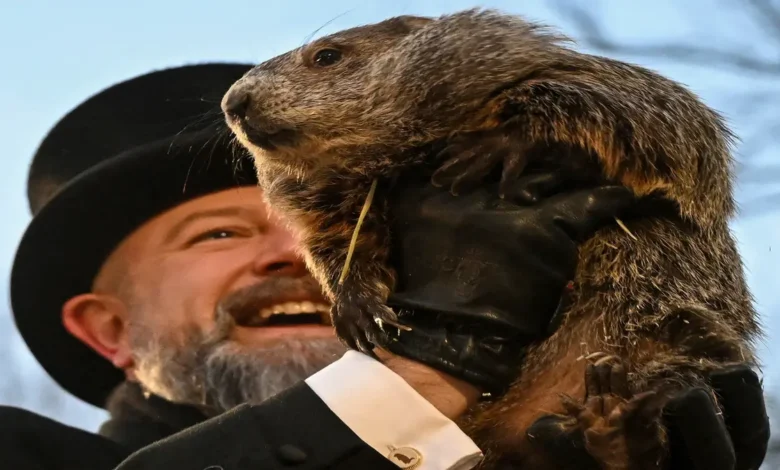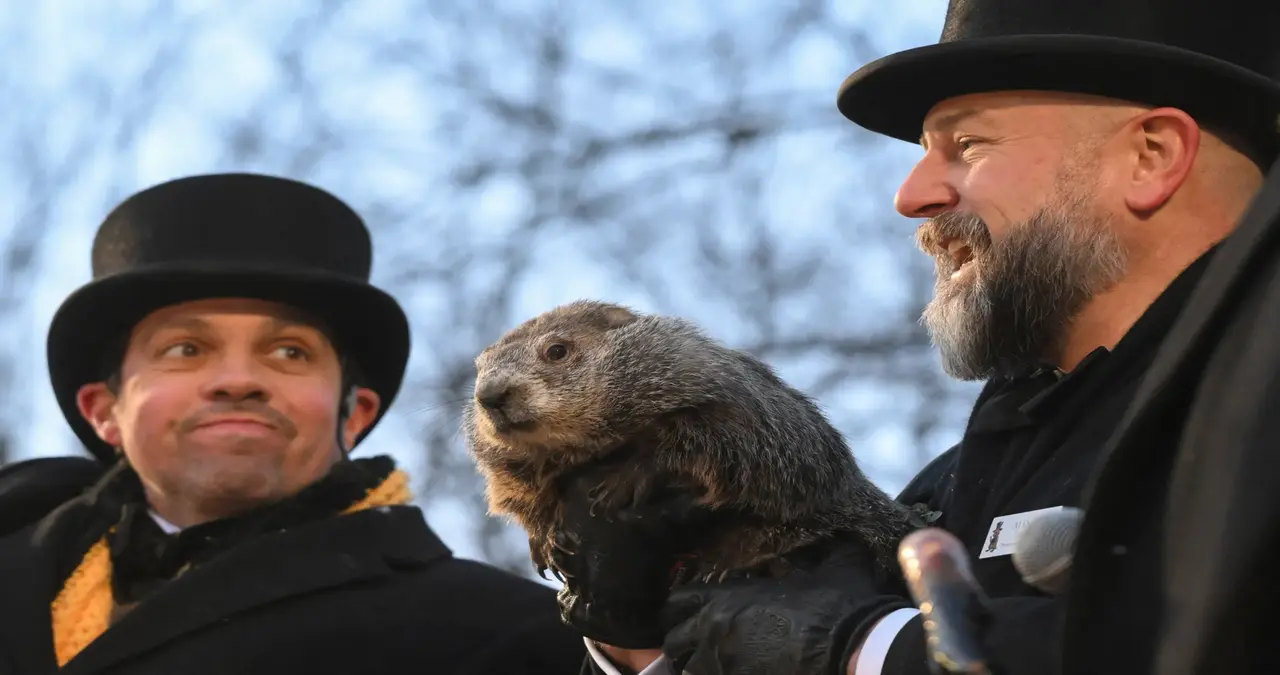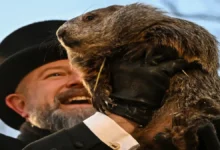
Did the Groundhog See His Shadow 2025
Did the Groundhog See His Shadow 2025 Groundhog Day might seem like a quirky tradition, but for many people across North America, it marks a symbolic turning point in the seasons. Every year on February 2nd, all eyes turn to Punxsutawney, Pennsylvania, where a groundhog named Punxsutawney Phil makes a highly anticipated appearance. The main question? “Did the groundhog see his shadow 2025?” It’s a lighthearted event, but one rooted in folklore, anticipation, and a shared cultural moment. And in 2025, the tradition carried on with just as much excitement as ever.
So, what happened this year? Did the groundhog see his shadow in 2025, and what does it mean for the coming weeks? Let’s dive into the rich history, the ceremony, the prediction for 2025, and the delightful madness that surrounds this annual event.
The Meaning Behind the Groundhog’s Shadow
The central belief behind Groundhog Day is charming in its simplicity. If the groundhog sees his shadow emerging from his burrow, he becomes frightened and retreats, signifying six more weeks of winter. If there’s no shadow, it means an early spring is on the way. The tradition is steeped in old-world beliefs, particularly German folklore, and has been carried over into American culture with great fanfare.
The idea rests on the assumption that clear weather on February 2nd indicates cold air and high pressure a continuation of winter. Conversely, cloudy skies suggest that the weather is changing and that spring is coming sooner than expected. While this isn’t exactly meteorological science, it’s still something people take delight in, and it has become a widely celebrated event.
Each year, the answer to “Did the Groundhog See His Shadow 2025” sets the tone for conversations in schools, offices, and newsrooms across the country. Whether or not Phil’s forecast turns out to be accurate, the ritual itself is what draws people in.
What Happened in Punxsutawney in 2025
In 2025, Groundhog Day was met with the usual buzz and media frenzy. Thousands of people gathered before sunrise at Gobbler’s Knob, the traditional site of the annual prediction. The atmosphere was electric, filled with music, dancing, warm drinks, and plenty of winter gear. The Inner Circle the tuxedo-wearing group of groundhog handlers prepared for the moment when Phil would make his grand appearance.
As the sun began to rise and the cameras rolled, Punxsutawney Phil emerged from his burrow. The Inner Circle huddled together to decipher his message, communicating in the “groundhogs” language that only they supposedly understand. The moment of truth arrived. Did the groundhog see his shadow in 2025? According to the official proclamation, Phil did not see his shadow.
This meant an early spring, much to the delight of the bundled-up crowd. People erupted in cheers, social media lit up, and memes began flooding timelines within minutes. For a moment, everyone could set aside daily worries and simply revel in the whimsical joy of an early spring prediction.
The Cultural Phenomenon of Groundhog Day
Groundhog Day is more than a weather forecast. It’s a tradition that has become a beloved part of North American folklore. From its humble beginnings as a German superstition, it has evolved into a spectacle covered by major news outlets, discussed on talk shows, and celebrated in schools and communities across the continent.
One reason why people care about whether the groundhog saw his shadow in 2025 is because it offers a shared experience. In the middle of a long, cold winter, it gives people a reason to smile, to hope, and to come together. There’s something magical about watching a small creature emerge from the earth and hold the power at least symbolically to shift the season.
Of course, part of the appeal also lies in the absurdity. No one believes a groundhog has special meteorological abilities, but that’s part of the charm. It’s fun, it’s quirky, and it’s a tradition that gives people a reason to celebrate something simple and joyful.
Phil’s Record and Reliability
When we ask, “Did the groundhog see his shadow in 2025?” we’re also revisiting a long history of Phil’s predictions. Punxsutawney Phil has been making forecasts since 1887, and over the years, he’s seen his shadow far more often than not. Historically, Phil has predicted six more weeks of winter about 85% of the time.
But how accurate is he? According to various analyses, Phil’s accuracy rate is about 30-40% when compared to actual weather patterns. That’s not great by scientific standards, but it’s also not the point. Phil’s predictions are more about tradition and entertainment than science.
In 2025, Phil broke his usual trend. By not seeing his shadow, he offered hope for an early spring, diverging from his typical behavior. Whether or not that comes true is something we’ll all watch unfold together in the weeks that follow.
Media Coverage and Online Reactions
When the announcement was made that the groundhog did not see his shadow in 2025, media outlets sprang into action. Morning news segments reported the update, weather channels added it to their bulletins, and social media became a hotbed of reaction. Hashtags like #GroundhogDay2025 and #EarlySpring trended within the hour.
People love to engage with Groundhog Day in fun and creative ways. GIFs of groundhogs popping out of holes, winter-weary citizens cheering, and tongue-in-cheek skepticism about Phil’s skills all made the rounds. For many, this yearly event is a light-hearted reprieve from the more serious news cycle.
Families use the day as an educational opportunity, teachers plan themed lessons, and offices host Groundhog Day breakfasts or trivia contests. The answer to “Did the groundhog see his Shadow 2025” doesn’t just provide a forecast it inspires community and creativity.
Groundhog Day in Pop Culture
Groundhog Day’s cultural imprint goes beyond weather folklore. The 1993 film Groundhog Day, starring Bill Murray, cemented the event’s place in pop culture history. The film, about a man reliving the same day over and over, brought a new level of fame to the tradition. It’s not uncommon for TV stations to play the film on February 2nd, keeping the tradition alive for a whole new generation.
This blend of folklore and Hollywood has created a layered cultural event. When we ask in 2025, “Did the groundhog see his shadow?” we’re engaging in a tradition that now spans centuries and media formats. It’s become more than just a moment it’s a full experience.

The Role of Weather Patterns
Even though Groundhog Day isn’t scientific, the weather on February 2nd can give some clues about upcoming trends. Meteorologists often look at long-term climate data to forecast seasonal changes. In 2025, many parts of North America had been experiencing milder winters, influenced by broader climate patterns.
When Phil did not see his shadow in 2025, it aligned with what many meteorologists had already been predicting an early onset of spring. While this might be coincidental, it adds a bit of legitimacy to the prediction, even if it’s mostly symbolic.
So while the answer to “Did the groundhog see his Shadow 2025” may not hold scientific weight, it does open the door for further discussion about climate trends, regional weather forecasts, and the growing interest in how our seasons are shifting.
Did the Groundhog See His Shadow 2025 Why People Still Care
It’s fair to ask why we still care about what a groundhog sees on a cold morning in February. But the answer lies in the human need for rituals and communal experiences. In a world that often feels unpredictable and stressful, something as simple as Groundhog Day can offer comfort.
The tradition allows people to feel connected to each other, to history, and to the changing natural world. And in 2025, when the question “Did the groundhog see his shadow” arose once again, it brought with it all the joy, humor, and seasonal anticipation that has kept this tradition alive for well over a century.
Looking Forward to Spring
With Phil predicting an early spring in 2025, many people are already planning for warmer days ahead. Gardeners are prepping their soil, runners are itching to hit the pavement without bundling up, and students are daydreaming about spring break.
The belief that spring is near, even if rooted in folklore, can provide a mental boost. It helps people push through the final stretch of winter with something to look forward to. That’s the real power behind asking, “Did the groundhog see his shadow in 2025?” It taps into hope, renewal, and the timeless excitement of a new season.
Conclusion: The Magic Lives On
So there you have it in 2025, the groundhog did not see his shadow, and an early spring was predicted. Whether you believe in the accuracy or not, the ritual of Groundhog Day continues to enchant, entertain, and bring people together. The tradition is a reminder that even the smallest moments can have big meaning.
From its roots in ancient superstition to its current form as a media spectacle, Groundhog Day remains a beloved annual event. And the question, “Did the groundhog see his shadow 2025,” will now be part of the long history that makes February 2nd such a special day year after year.

